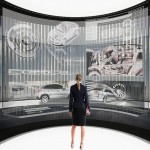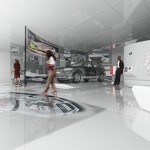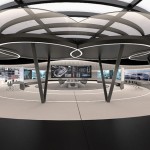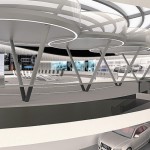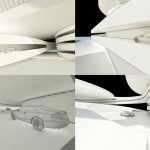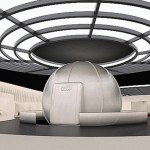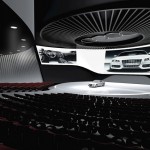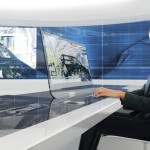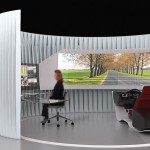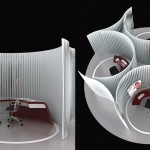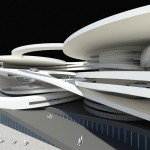ORTLOS has been commissioned to develop a vision for the innovative environment supporting the future car development. Our trans-disciplinary team of experts has defined and visualized the spatial concept for campus of virtual car prototype development. Based on our know-how, research of last 13 years and expertise from different domains, we have been able to provide a holistic concept for the future working environment for a prominent client. This project shows different space typologies and their flexibility, technological and spatial benefits of advanced environments, as well the methods and strategies for spatial organization of dynamic functional entities. ORTLOS has created a first building conceived as “networked space”, created through interconnected immersive environments for management, design, simulation, communication and presentation.
The engineer of the future is a knowledge worker. He works with data and information of various kinds. His product (the virtual prototype), his working setting (the virtual environment) and his collaboration environment (the virtual enterprise), altogether build “Lifecycle Intelligence” of innovative and creative product development. This new networked practice is based on: Engineering Intelligence, Ambient Intelligence and Connected Intelligence. At its center there is the knowledge engineer of the future. He uses various novel interfaces, e.g. for social interaction, knowledge visualization and communication in multi-agents systems. New design tools make him aware of diverse influences and information patterns that were not considered before.
The knowledge worker of the future needs a new intelligent ambience. And the crucial argument here is not considering the aesthetics or functions of this ambience, but its performance. Different interaction and simulation capabilities are combined and interconnected into a holistic concept of product development, supported by the usage of multi-modal interfaces and multi-functional responsive spaces.
Architecture coupled with the corresponding technology provides users with an infrastructure that enables access to data anywhere, is adaptable to various spatial settings and context-aware, i.e. a built-in intelligence which always adapts “on-demand” to the user. This performative aspect is invisible and implemented from the start in the spatial environment so that it allows a theoretically infinite flexibility and at the same time, it is open to new developments.

